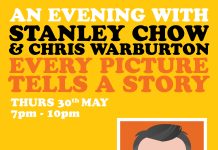2020 marked the 50th anniversary of Pride – a term used to describe the celebration, dignity and equality of LGBTQI+ people as a social group. We’ve certainly come a long way in 50 years, from breaking down gender roles (like more men wearing makeup), to same-sex marriage being legalised in many places.
The first years of Pride celebrations began in the early 1970s as a means of commemorating the Stonewall Riots. These riots occurred in 1969, after a gay club located in Greenwich Village in New York City was raided by police. Tired of discrimination that was so common in the 60s, the gay community fought back, bringing on six long days of violence and clashes between the LGBT community and police. These events acted as as a catalyst for the gay rights movement around the world, inspiring others to join the fight for equality.
While the original pride event consisted of a small community of people in a local neighbourhood, 2020 celebrations involved nearly five million people congregating in New York alone. The LGBTQI+ community still face prejudice, but significant progress has been made towards achieving equality and understanding.
The early days of Pride
One of the first pride parades took place in NYC on the 28th of June, 1970. It attracted a few thousand individuals, bravely congregating to cover a route of 50 blocks in the city. Similar marches took place in Chicago, San Francisco and Los Angeles. The event was met with hostility, as marchers were yelled at, challenged and spat on. Pride attendees had to ignore these taunts and project confidence, promoting their rights to choose the identity that felt authentic to them.
It was as if the world had been waiting for an event like Stonewall to give them the platform from which to protest. It is a feeling that spread from New York City to the rest of America and beyond. As the years went on, more Pride marches and celebrations have been added to the list.
Global events
While the 1970s saw Pride take place around the US, in the 1980s, it became a global event. Cities such as Montreal, Mexico City, Sydney, and London held their own events. Despite the fact it was the celebration of identity that spread, it was soon to overshadowed by the AIDS epidemic. This disease was a tragedy for the gay community, and the later 1980s events were clouded with grief for those who had been lost.
While AIDS was not a disease limited to the gay community, it did turn the media spotlight onto Pride more than ever before. In the 1990s, more businesses than ever felt it important to support Pride events. Media commentary eventually led to better education and more understanding, and it was now acceptable to participate in Pride and a positive affirmation of a business’ values.
Proclamation
In 1999, US President Bill Clinton issued a proclamation that every June would be Gay and Lesbian Pride Month in the US. This was later, in 2008, broadened to the full LGBTQI+ community by Barack Obama.
The 2000s, with this added sense of legitimacy, saw Pride events return some to the campaigning routes. The goal of legalising same-sex marriage became the theme of many Pride demonstrations. In 2010, in San Diego, there was a massive Pride event demonstrating against the military rule of don’t ask, don’t tell, which left many in the armed forces in the US unable to openly live their true identities. Pride once again became the vehicle for LGBTQ+ groups to make political points and demand to be heard by their communities.
Commercialisation
Modern Pride faces a number of challenges. First, there is a concern that organisers have allowed Pride to become too commercialised. Organisers of events have been akin to huge corporations, seeking sponsorship deals from businesses and increasing financial demands from the crowds. In other words, the roots of protest and celebration have been replaced by profit. Some leading activists have begun to question if the need for action denoted by the rainbow flag has been lost to tokenism.
Representation
In 2021, the fight continues, and Pride events continue to be an important date in the calendar for LGBTQI+ people and their allies. The community as a whole continues to grow to include people with different identities, to understand their struggles, and to fight for their representation.
This growth has led to many different groups coming forwards and fighting for better representation – which has let to new iterations of the traditional rainbow Pride flag. Some versions include variations such as black and brown stripes to recognise trans and queer people of colour or yellow triangles and purple circles to represent the intersex community. Changes such as these have gained mixed reactions from the LGBTQI+ community, with some believing that separate intersectional injustices seem to weaken the overall cause – arguing that we should be pulling together, not moving apart in different directions..







